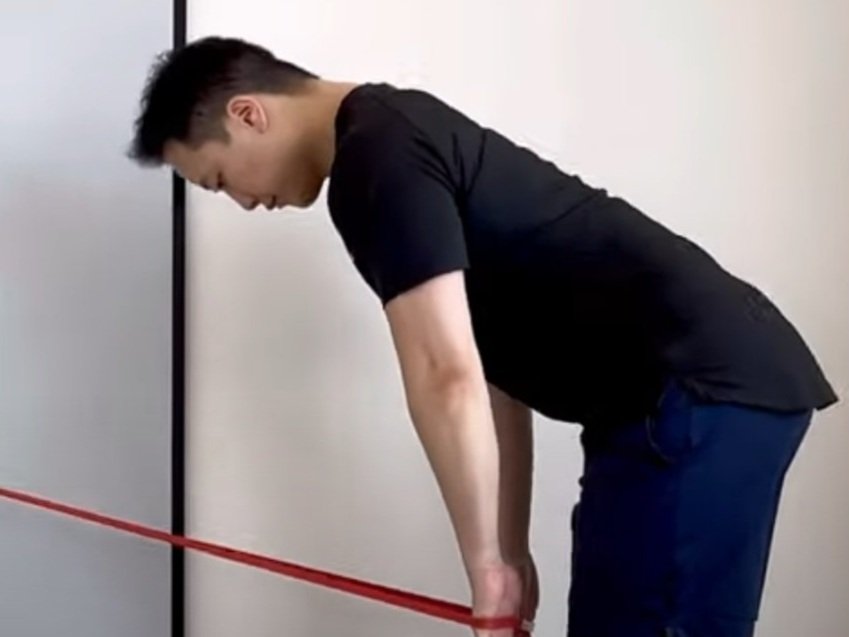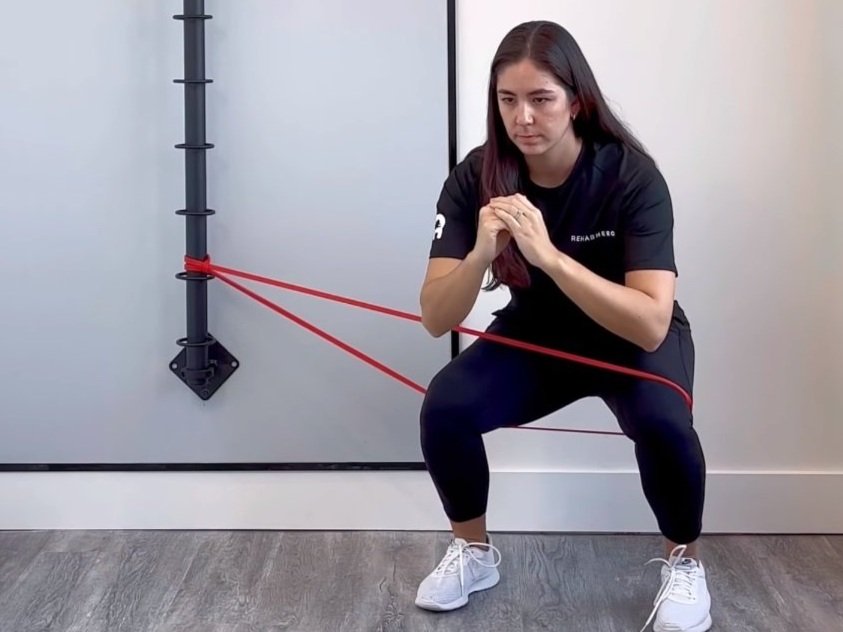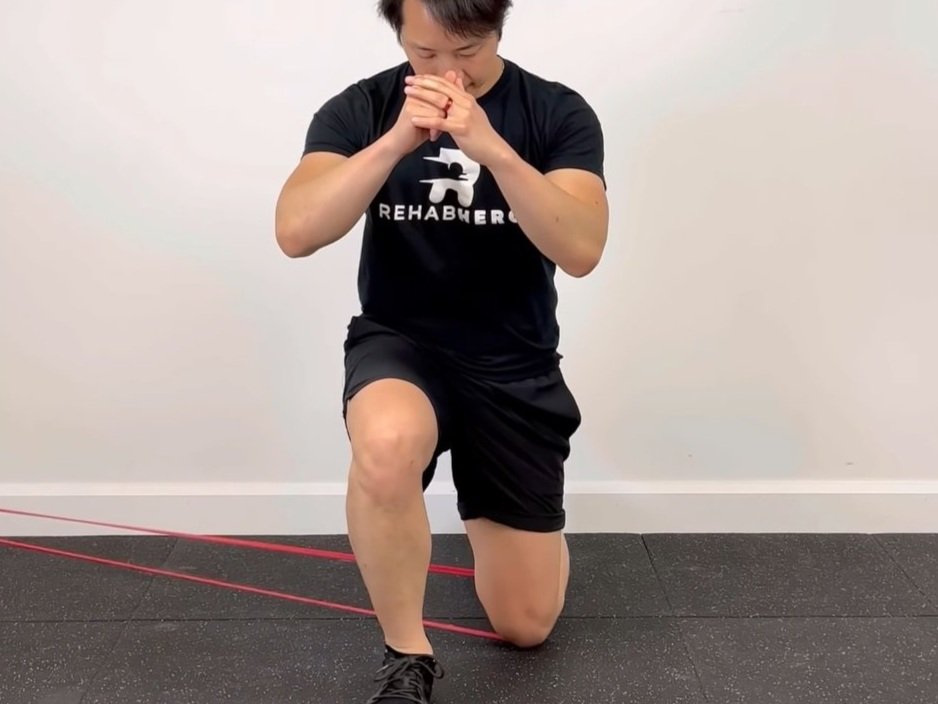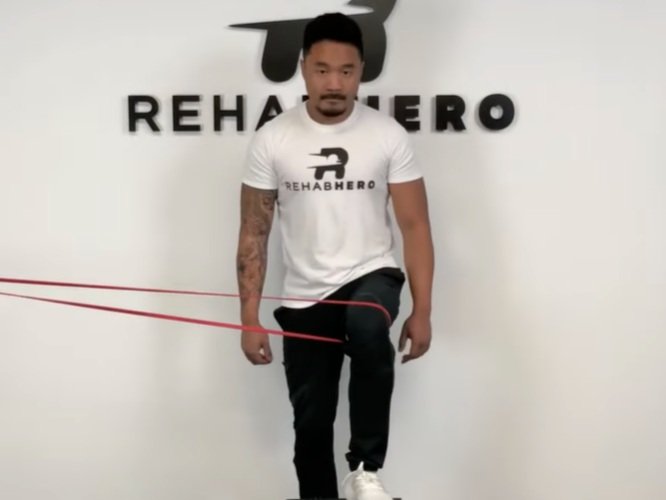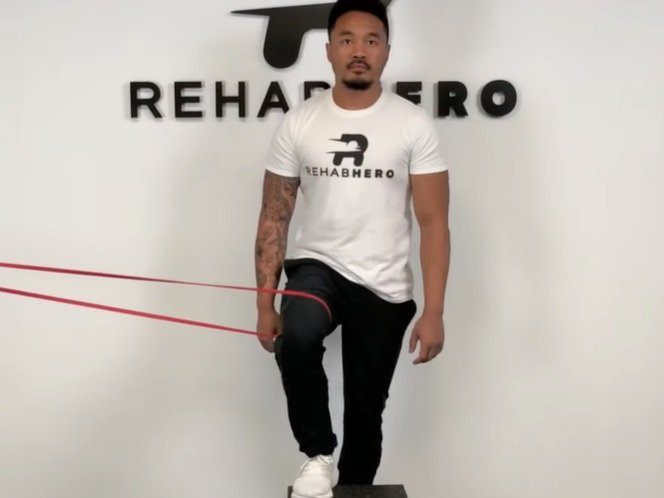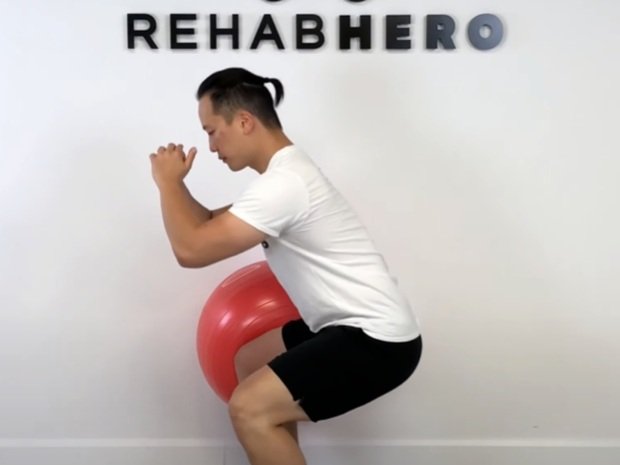What is RNT?
What is reactive neuromuscular training (RNT)?
Reactive neuromuscular training is a form of external cueing used to increase the facilitation or engagement of a muscle or group of muscles for the purposes of increasing joint stability and reducing pain. Specifically, the goal of RNT exercises include increasing dynamic joint stability, movement patterning and fine motor control. Additional benefits include improved postural awareness, proprioception, and muscle engagement adaptability (the ability to change the amount of force produced by a muscle to resist a load).
Typically, RNT uses an external force such as an exercise band, exercise ball, foam roller or yoga block. It is used to introduce a force in the direction of the ‘movement dysfunction’ in order to promote the opposite movement. In this respect, the goal of RNT exercises is to improve movement quality through the use of functional exercise. RNT exercises are prescribed to address pain relating to dynamic instability.
Reactive neuromuscular training encourages the co-contraction of antagonist and agonist muscles surrounding a joint. Co-contraction is required to produce force couples required for balancing joint forces. This will also increase joint congruency and arthrokinematic gliding of a joint during movement which can decrease loads dumped onto static soft tissues.
The best part about these this of exercise is that they can be applied to any part of the body.
How does RNT work?
Reactive neuromuscular exercises focus on improving joint stability through the improvement of proprioception. Proprioception is the combination of joint movement awareness (kinesthesia) and joint position awareness. Essentially it is the ability to know where your body is positioned in space and the direction it is moving. Peripheral joint receptors found in the articular structures are responsible for providing this information to your nervous system, allowing for the production of fluid joint movement. Receptors are also found in the muscles, tendons, and ligaments surrounding your joints.
Mechanoreceptors convert movement into electrical information that is sent to the central nervous system (CNS). This information is then interpreted by the brain to influence joint coordination, joint stiffness, and reflexes to improve joint stability. In the CNS, this information is processed at three levels: the spinal level, cerebellum, and the brain’s cortical centers.
The Spinal Level
Through the activation of spinal reflexes, the body responds with dynamic muscular stabilization. The main receptors responsible for sensing movements at this level are the muscle spindles. A ‘stretch reflex’ is the facilitation or inhibition of motor neurons in response to movement. The purpose of a stretch reflex is to upregulate or downregulate muscle activation in response to changes in muscular length. It does so to maintain a muscle length that is within normal limits. When an external force is introduced & causes a muscle to lengthen, a stretch reflex causes the muscle to reflexively contract to maintain it’s length. This reflex is very quick as it does not need to interact with higher levels of your CNS. Reactive neuromuscular training takes advantage of this mechanism by introducing a load to increase the activation of an inhibited muscle.
The Cerebellum
The cerebellum is responsible for working together with you visual, vestibular and somatosensory systems to monitor balance and posture.
The Primary Motor Cortex
The primary motor cortex is the highest level in the central nervous system that involves motor control. Mechanoreceptors provide feedback that is interpreted to create motor patterning and the sequencing of movements. This also includes the conscious awareness of joint position & movement. Conscious awareness of joint position can develop in both static and active movements. Conscious awareness of joint positioning can convert to unconscious awareness through the use of repetitive movement. Reactive neuromuscular training takes advantage of this by introducing an external load to increase conscious awareness of joint positioning. Through repetition, the need for an external load (to cue the activation of a muscle for dynamic stability) will decrease as unconscious awareness develops. Primary motor cortex involvement occurs in activities that last longer or equal to 300 milliseconds.
How does dynamic instability cause pain?
Dynamic instability of a joint can develop in response to accumulated fatigue, a repetitive overuse injury, or in response to an acute injury. Following an injury, arthrogenic inhibition of surrounding muscles can cause muscles to downregulate in activity. Specifically, an injury can cause disruption of articular mechanoreceptors which then inhibit normal reflex joint stabilization. This decrease in neuromuscular joint stabilization can then lead to deficits in proprioception.
As dynamic stabilization of a joint is reliant on sufficient proprioception, when proprioception is negatively affected, so is the dynamic stabilization of said joint. Insufficient dynamic stabilization of a joint can lead to inappropriate movement compensation and overload of surrounding structures. This can lead to repetitive injuries or pain presisting even after the resolution of acute symptoms.
Injuries to muscles may also lead to dynamic instability. Injury to muscles can compromise the afferent signaling of muscle spindles. As this information is required in order to provide a stretch reflex, changes in feedback can lead to suboptimal changes in muscle activation and functional stability of a joint.
An example of RNT in action
Reactive neuromuscular training may be used during the initial assessment with your sports chiropractor, sports physiotherapist, or sports massage therapist. Following the patient history, orthopedic exam, neurological exam, and muscle testing, RNT may be used to assess for dynamic instability. It should be noted that dynamic instability is often a diagnosis of exclusion or is a secondary diagnosis for musculoskeletal pain (with the primary diagnosis being an orthopedic injury such as an ACL tear). Within this blog post, we’ll be taking a look at an example of how to assess for dynamic instability and how to prescribe RNT exercises for the knee.
Knee pain occurring during activities can be tested for in functional movements like the squat or split squat. In both movements, knee valgus due to ‘weak glutes’ is often diagnosed without additional tests. Unfortunately this is a reductionist diagnosis as knee valgus may also occur due to insufficient co-activation of the hip adductors (the inner thigh). In this circumstance, knee pain may not improve if ‘glute strengthening’ exercises are the only type of exercises prescribed.
To test for whether or not the inhibition of the hip abductors (the glutes) or the hip adductors (inner thigh) are responsible for the dynamic instability of the knee, the squat can be tested using an exercise band. An exercise band can be looped above or below the knee to provide a resistance into abduction or adduction. This test is considered positive if either type of external cue reduces symptoms significantly, if range of motion increases, or if effort levels for completing the squat decreases.
If a positive test is observed, the test will need to be reproduced in another movement such as the split squat or step up. This will help to confirm whether or not reactive neuromuscular training will be helpful and if the root cause of the pain is due to dynamic instability.
If one of the band positions during a split squat significantly improves symptoms, and the band position was the same as the squat test done previously, the test becomes the prescribed exercise. Additional exercises that target the muscle group affected may also be prescribed to improve functional stability of the knee. If the RNT hip adductor exercises improved symptoms, adjunct exercises such as the Groin Slider or Copenhagen Plank may be prescribed. If the RNT hip abductor exercises improved symptoms then Crab Walks or Banded Side Kicks may be prescribed instead. If symptoms do not improve during the tested movements, RNT exercises may not be warranted and clinicians should re-asses their differential diagnosis list.
If you’re looking to get assessed by a qualified clinician in Toronto or Markham, you can book in an appointment with a Rehab Hero therapist by using the button below:
Written by: Dr. David Song
Dr. David Song is a chiropractor in Toronto with experience working with powerlifting and Olympic weightlifting athletes. He has a passion helping individuals improve their strength training related injuries. Now, he focuses on educating patients in-person and on the internet to help prevent as many injuries as possible.


















